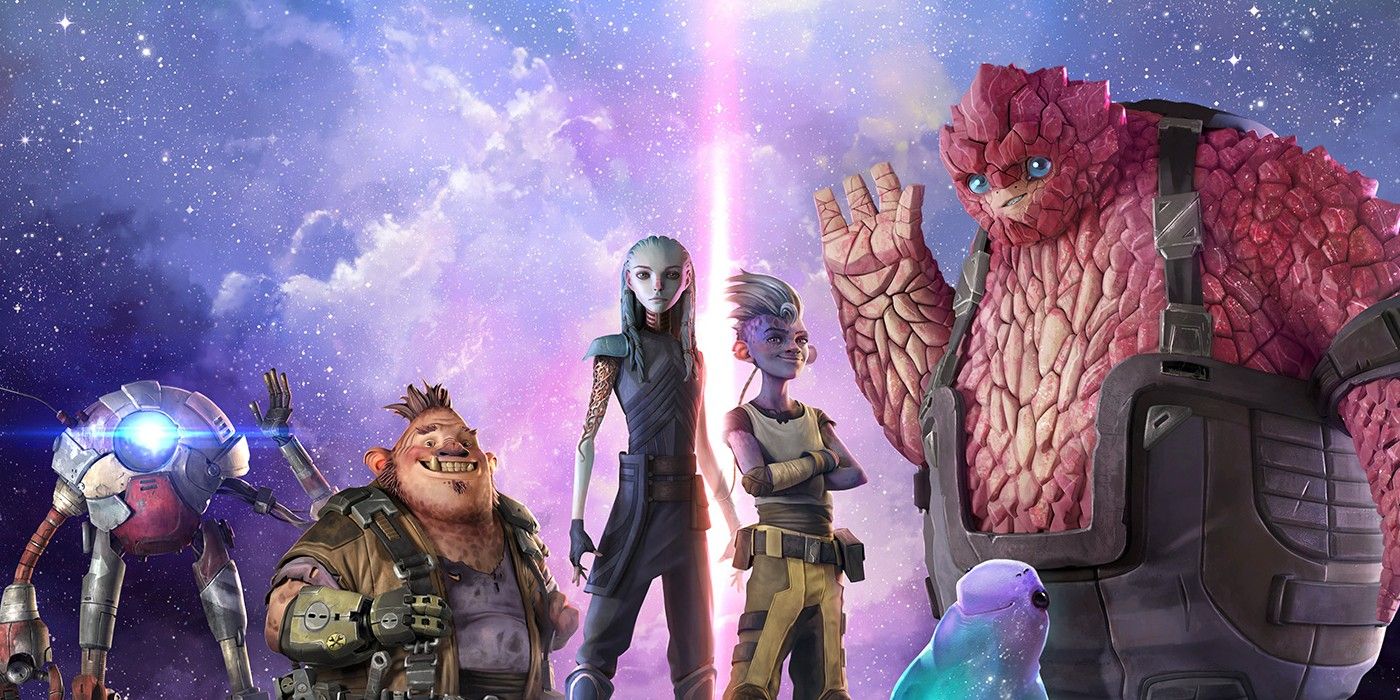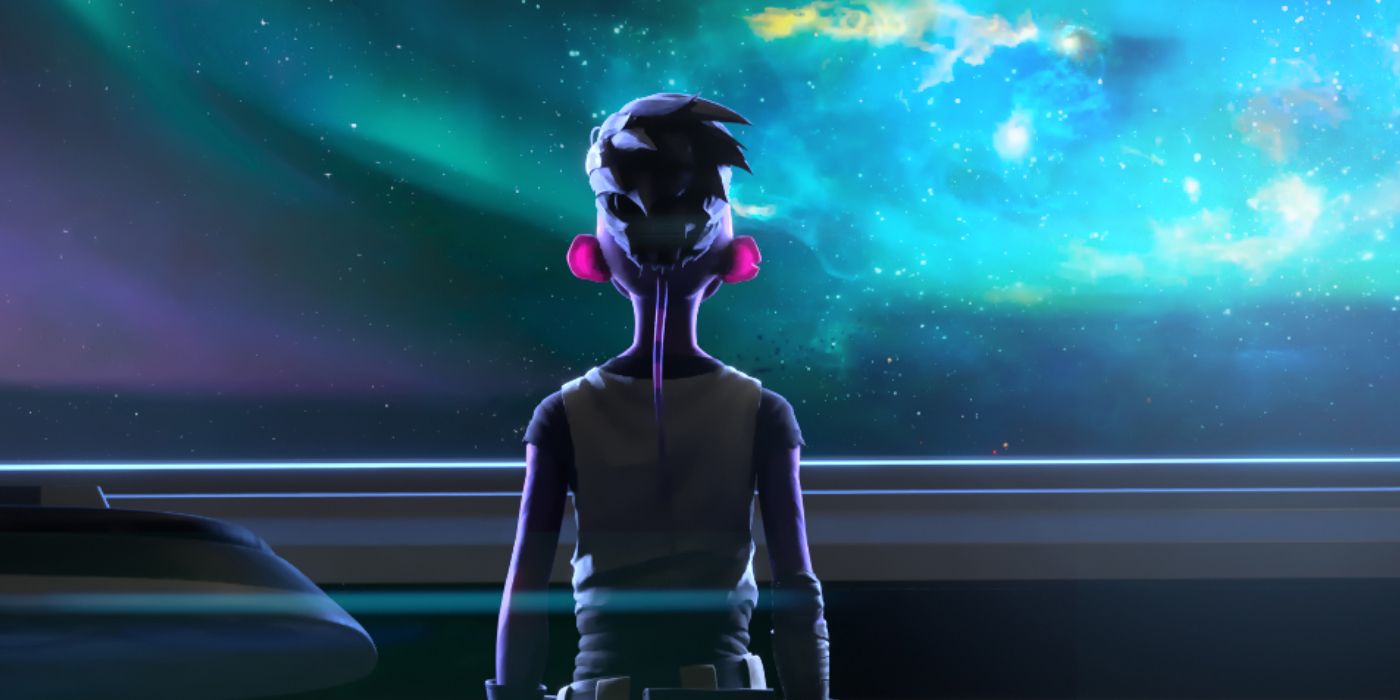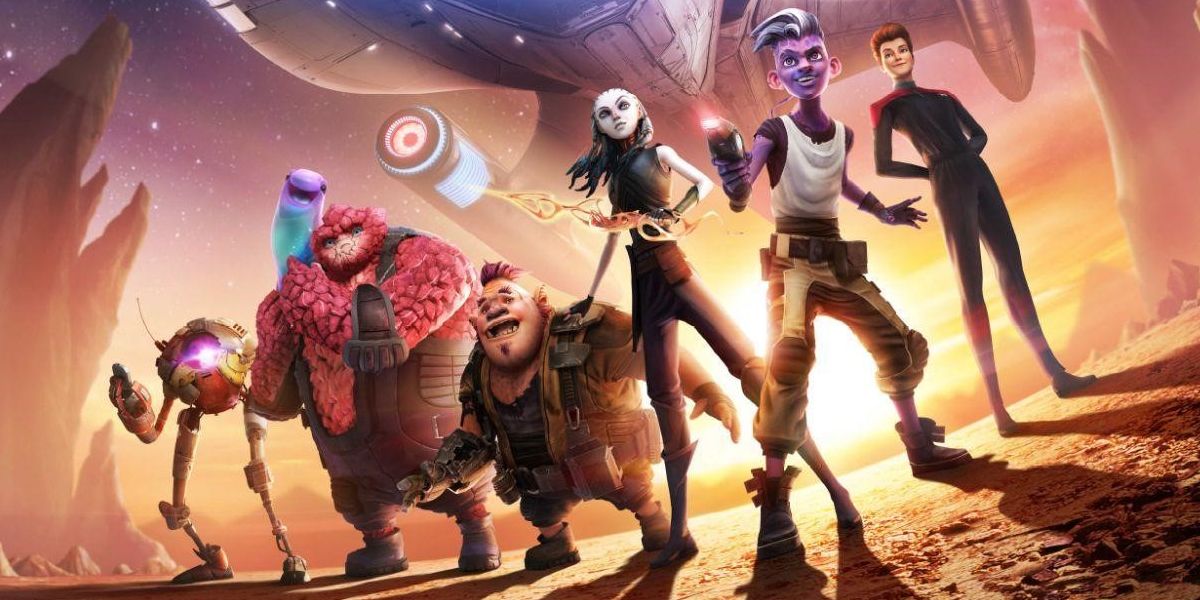After premiering on Paramount+ this past October, the animated series Star Trek: Prodigy is set to make its linear television arrival on Nickelodeon on July 5, bringing the show to an even bigger audience. Set within the Star Trek Universe's lawless Delta Quadrant, Prodigy follows a group of young misfits who leave the harsh mining world of Tars Lamora, escaping on the abandoned Federation starship, the USS Protostar.
In an exclusive interview with CBR, Prodigy series creators and showrunners Kevin and Dan Hageman, with director and executive producer Ben Hibon, spoke about introducing a fresh perspective to the Star Trek Universe. They explained how Prodigy draws in audiences unfamiliar with the wider Star Trek lore and shared their inspirations behind creating the acclaimed animated show.
CBR: Star Trek has always been a story about assembled families. How was it creating Gwyn, Dal, Rok, and the others and bringing them together for Prodigy?
Dan Hageman: When we started with characters outside of Federation space that we fell in love with, with a completely alien cast, we honestly thought about what they'd look like on a toy shelf. We wanted each one to pop and have something special, and we're older geeks, going like, "What if Zero had a light inside of them? What if Gwyn has a weapon that can turn into things? What if Rok had a hugging grip?" Really, it was a love letter to taking Star Trek and trying to imagine what it would look like in the hands of a new viewer.
Kevin Hageman: When we came up with each character, we wanted to make sure that each one had a rich story and each one you fell in love with. When I look at other TV shows, in general, when you have that family, there are a couple characters you fall in love with and a few that are on the periphery. We really tried to make each one special, and, from what I've been seeing from audiences' reactions, I'm seeing it work because some fans love Dal, others love Gwyn, Murf, Rok, Zero, or Jankom. It's across the board, which I love.
Ben Hibon: There is the characterization, and there is the visual side. We were also really excited about potentially creating characters and new alien species that would be completely different from each other. They're really polar opposites in terms of shapes, sizes, [and] materials, and the animation allowed us to really have fun with that and experiment with pretty much whatever we fancied. That was a fun departure from some of those assembled teams from the past. We were able to break the form much more and give interesting and arcane looks to each of them that harkens back to toys but also characterizations of the characters themselves.
Even though these are young characters, you're not afraid to show them fail and see the consequences of their actions. How was it bringing that to the crew of the Protostar?
Dan Hageman: That's how you evolve, usually, because something gets in your way. You usually fail, and you find a way around that, and you evolve. We always want these characters to evolve. These are Season 1 characters, and in our heads, we're looking at what they look like in Season 4 and 5, and they're different people. That's something we've always wanted to do in our writing, to challenge an audience. We don't view them as younger. We just view them as audiences who have yet to experience the joys of Star Trek.
Kevin Hageman: They're fallible, and, as a storyteller, those fallible characters are the ones we relate to and love because we're all fallible. I love Indiana Jones because, in Raiders of the Lost Ark, he jumps over a pit and doesn't make it. He barely manages to grab a root that barely saves his life. Mister Alpha Male, that's not me. I don't care about that guy. That just goes back to good storytelling.
While it's clear from the start that this takes place within the Star Trek Universe, you spend more time developing the new characters before weaving in more familiar Star Trek elements. Was that narrative sensibility always intended?
Dan Hageman: Yes! We're constantly putting on hats of honoring what was before us and honoring what's new, and it has to start with what's new. Yes, we could honor all these icons, and all the Star Trek fans would go, "Yes, this is exactly what we want!" But if you run an engine on just nostalgia, it's going to run out of gas. You've got to have new characters that you care for.
Kevin Hageman: And that's not going to grab the kids. This show is meant to grab a new audience and grab children today, so we weren't going to lean too heavily on nostalgia.
You guys hit the ground running right from the first episode. Was that emphasis on action for the opening serving as a bit of a hook for younger audiences?
Dan Hageman: It's how, if we were watching the show, we'd want it to start. It's got to have some action and camaraderie.
Kevin Hageman: A huge inspiration was The Goonies. When you meet the Goonies, they're a fun bunch of kids, and all of a sudden, there's a golf course developer who's going to take down all their homes, and they're not going to be able to play and hang out anymore. I love it. I care for these kids!
Dan Hageman: Then they find a treasure map!
Kevin Hageman: Exactly! It's the same thing. Here's each of the characters, let's fall in love with them, and suddenly they're given a starship -- what next?!
Hibon: It's a big event that changes all of their lives. We pick up at that point, which is very exciting, scary, and hopeful, all of those different emotions in those [first] two episodes. Then they start to settle themselves a little bit more, but then it spikes, with peaks and valleys. It's the thrust of that adventure, the sense that everything is dire -- how are we going to change the glass ceiling and break through it?
Suddenly, all the possibilities of the world are open to you. Sometimes that's scary, and sometimes it's exciting. It's having all those spices that we all love, that ambling excitement when the world of adults opens up to us because we were just kids, and suddenly we have all these opportunities. I think the pilot and early part of the season does that really well.
After having Prodigy debut its first 10 episodes on Paramount+, how is it bringing those episodes to Nickelodeon for a linear television broadcast?
Dan Hageman: I think we're very fortunate to have the powerhouse of Nickelodeon and the powerhouse of Paramount+, and that they both want to air the show. We'd love to air it on every channel if we possibly could. We also like the idea that they're two very different audiences. The Paramount+ audience has a lot of Star Trek fans on there, and there are a lot of fans who want to introduce the show to their kids. I think, with Nickelodeon, you're going to have the opposite effect with kids who are going to find the show and get their parents, who don't know anything about Star Trek and bring them in. We think they work very well together.
Created by Kevin and Dan Hageman, Star Trek: Prodigy is available to stream on Paramount+ and makes its linear television broadcast premiere July 8 at 8 pm ET/PT on Nickelodeon.



